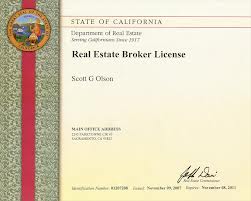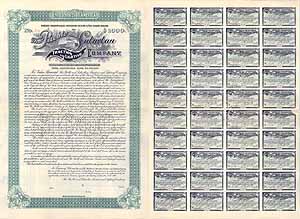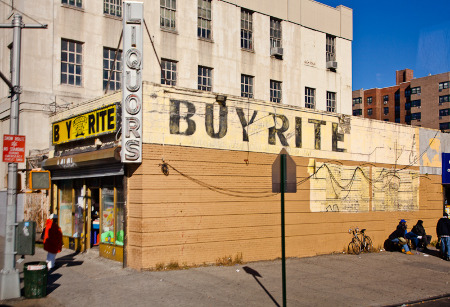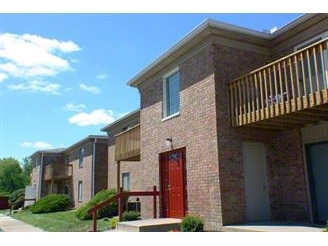 This may be one of my most important commercial loans blog articles ever because I explain almost a dozen new commercial finance terms of art. My history of commercial loans continues below.
This may be one of my most important commercial loans blog articles ever because I explain almost a dozen new commercial finance terms of art. My history of commercial loans continues below.
In Part I, which took place during the late 1960's, we noted that there was no inflation yet; but every commercial loan had to be a portfolio loan because there was no organized secondary market for commercial loans. A lender couldn't quickly sell off a commercial loan in a liquidity squeeze.
As a result, life companies, commercial banks, and savings and loan associations had only a limited appetite for commercial loans. Money for commercial loans was available, but if you had a construction loan or a balloon payment coming due, there was never any guarantee that the nearby commercial lenders had any money left over in their commercial loan allocations (quotas).
Imagine the following scenario: Your commercial loan balloons in November, but every life company, commercial bank, and savings and loan association in town has already used up all of their commercial loan allocation for the year! You might have to pay the ballooning bank a two-point extension fee, just to extend the loan until the first quarter of the following year, when the nearby commercial lenders got a new allocation of commercial loan money! Therefore construction lenders always demanded a forward takeout commitment.
Before we define a forward takeout commitment, we must first define a takeout loan. A takeout loan is just a permanent loan that pays off a construction loan. Because the property has just been constructed, a takeout loan is always a commercial property's very first permanent loan.
"Oh, great, George. You've just defined a takeout loan using another term that I didn't know - a permanent loan. So what on earth is a permanent loan?"
A permanent loan is a first mortgage loan on a commercial property, with a term of at least five years, that calls for some amortization. In home loan lending, most first mortgage loans are amortized over 30 years. In commercial real estate lending, most commercial loans are amortized over 25 years. If a commercial property is older than 35-years-old, many commercial lenders will demand a 20-year amortization, or maybe even a 15-year amortization.
A permanent loan on a commercial property will typically have a term of 5, 7, or 10 years; although SBA loans and USDA Business and Industries loans (partially-guaranteed by the Federal government) will sometimes be fully-amortized loans over 25 years. If a commercial first mortgage loan does not have any amortization; i.e., it's an interest-only loan, the first mortgage loan is usually considered a mini-perm. Mini-perms typically have interest-only terms of two to three years.
Okay, so far we've said that a takeout loan is just a permanent loan that pays off a construction loan. A permanent loan is just a first mortgage on a commercial property, with some amortization and a term of at least five years. And because most takeout lenders had quotas on their commercial loans, commercial construction lenders almost always required forward takeout commitments.
A forward takeout commitment is nothing more than a letter promising to deliver a takeout loan at some time in the future, typically 12 months or 18 months out. Forward takeout commitment letters typically cost the developer one or two points, just for the letter itself. If the developer actually asked the lender to fund, there was typically a loan origination fee of another one or two points.
Did you know that if a developer paid for a forward commitment letter that he was NOT required to take down the lender's takeout loan? For example, let's suppose a life insurance company issued a 12-month forward takeout commitment for $2 million at 5.0%. Then let's suppose the developer completed the office building, and because Lockheed Aerospace opened a new plant in town, the developer filled the building at much higher rents than he was projecting. Bank of America then offered the developer a $2.2 million takeout loan at 4.75% and a loan origination fee of just one point. Most developers would jump all over the Bank of Amercia deal and would politely tell the life company that they were not taking its loan. The life company might be ticked off (and might internally blacklist the developer), but there was nothing that the life company could do.
Commercial construction loans then, as well as now, were usually written by a local commercial bank. The developer would start the construction loan process by first sitting down with a nearby banker. Banks greatly prefer to make commercial construction loans close to one of their offices because construction loans require progress inspections, where a bank representative would visit the construction site and verify that the project was on-time and within budget, and that the project was being built according to plans and specifications.
The local banker knows the local commercial real estate market. He might look at the developer's plans and financial projections and says, "I'm sorry, Bill, but you're projecting office rents of $36/sf here in podunk Midwest City, Oklahoma. There is no way folks here can afford to pay that kind of rent. This deal is a non-starter."
Or the local banker might say, "Okay, you're projecting $28/sf here in Arlington, Virginia (the fourth largest city in the state). That looks very do-able. Go get yourself a forward takeout commitment, and assuming you've contributed at least 20% of the total cost of the project, I'm sure our bank would be willing to make the construction loan."
So Bill, the developer, then went out and found a life insurance company to issue a fixed rate forward takeout commitment. Back in the late 1960's, life insurance companies issued the vast majority of all forward takeout commitments, and these forward commitments were for fixed rate loans. Life insurance companies like fixed rate loans because their businesses are based on actuarial projections (how many policy holders are going to die in any given year). Life companies need to be virtually guaranteed of earning a certain interest rate on their investments. Hence their preference for fixed rate loans.
The forward takeout commitment might read, "Bill, if you build this office building according to plans and specifications, and you get it 95% leased up at your projected rent of $28/sf, we'll fund a $2 million takeout loan to pay off your construction lender. You must hand us two points before we give you this commitment letter, and there will be an additional 1.5 point loan origination fee if you ask us to actually fund the loan."
Bill, the developer, hands the life insurance company a check for $40,000 (two points on a $2 million commitment). He then takes the forward takeout commitment letter to a bank, located close to the proposed property, and obtains what is known as a covered construction loan or a closed-end construction loan. In other words the construction lender knows exactly who is going to pay it off.
This was the world of commercial real estate finance before President Richard Nixon took the United States off the gold standard and opened the bottle to the Inflation Genie.











 We will start our six-part journey in the 1960's, at a time when the United States was still on the gold standard, and inflation was close to zero. Back then there was no organized secondary market for commercial loans. If a bank or life insurance company ("life company") made a commercial loan, it was a
We will start our six-part journey in the 1960's, at a time when the United States was still on the gold standard, and inflation was close to zero. Back then there was no organized secondary market for commercial loans. If a bank or life insurance company ("life company") made a commercial loan, it was a 
 There is some logic in this position. Many commercial property investors trade up to a more expensive commercial property, one with even more depreciation, every five to seven years. Therefore it makes little sense to spend a lot money to obtain a long-term commercial loan, if that commercial loan is simply going to be paid off quickly.
There is some logic in this position. Many commercial property investors trade up to a more expensive commercial property, one with even more depreciation, every five to seven years. Therefore it makes little sense to spend a lot money to obtain a long-term commercial loan, if that commercial loan is simply going to be paid off quickly.
 The issue of licensing for commercial loan brokers is not as clear cut as one might think. There may be some shades of gray. Now be careful here. I am not writing today as an attorney expressing a legal opinion. I am just throwing some thoughts out there as a practicing commercial mortgage broker. Do NOT rely on this article!
The issue of licensing for commercial loan brokers is not as clear cut as one might think. There may be some shades of gray. Now be careful here. I am not writing today as an attorney expressing a legal opinion. I am just throwing some thoughts out there as a practicing commercial mortgage broker. Do NOT rely on this article!
 You've probably heard the term, "clipping coupons". In the old days, corporations would issue bonds to investors with little coupons attached that could be cut off. Every month little widows would go down to the bank and clip off one of the coupons and redeem it for one month's interest, with which the widow would buy her groceries and pay her rent.
You've probably heard the term, "clipping coupons". In the old days, corporations would issue bonds to investors with little coupons attached that could be cut off. Every month little widows would go down to the bank and clip off one of the coupons and redeem it for one month's interest, with which the widow would buy her groceries and pay her rent. First of all, why do we even care about preferred equity? Preferred equity is just a subject for the Big Boys working for the investment banks in New York, right? Well, that's been true up until now, but I predict that this form of commercial financing will becom
First of all, why do we even care about preferred equity? Preferred equity is just a subject for the Big Boys working for the investment banks in New York, right? Well, that's been true up until now, but I predict that this form of commercial financing will becom
 Real estate investors buy commercial properties because such properties generate cash flow (net rental income). You will recall that we said that a Cap Rate is simply the return on your purchase price that you would earn if you bought an income property for all cash.
Real estate investors buy commercial properties because such properties generate cash flow (net rental income). You will recall that we said that a Cap Rate is simply the return on your purchase price that you would earn if you bought an income property for all cash. Let's look at another example, but this time let's use the gross rent multiplier to compute the likely sales price or value of an apartment building. Suppose we're now looking at a 10-unit apartment building located just a few blocks away from the 12-plex (the above example) that sold last week for $1,350,000. We calculated the gross rent multiplier on the 12-plex to be 9.4, and let's assume the two buildings are roughly comparable (same neighborhood, similar condition, similar appeal).
Let's look at another example, but this time let's use the gross rent multiplier to compute the likely sales price or value of an apartment building. Suppose we're now looking at a 10-unit apartment building located just a few blocks away from the 12-plex (the above example) that sold last week for $1,350,000. We calculated the gross rent multiplier on the 12-plex to be 9.4, and let's assume the two buildings are roughly comparable (same neighborhood, similar condition, similar appeal).
 (1) The very first thing you must ask as you analyze a commercial loan appraisal is to what degree is the appraisal transparent? In other words, how much of the logic leading to the value conclusion is on display for you the reader? If the answer is none, the appraisal is useless. Throw it away. If the answer is some (in other words there are gaps in the logic) then you must either (a) once again, decide to toss the appraisal, (b) decide to accept some degree of uncertainty, (c) attempt to fill the gaps on your own, or (d) contact the appraiser and see if she can provide the missing logic. (Sometimes the appraiser will have the information you need on file, but they just didn't include it in their final report.) Ideally the answer is none or very little, and the commercial loan appraisal can be said to be highly transparent. At any rate, you will need to be asking this question throughout your analysis.
(1) The very first thing you must ask as you analyze a commercial loan appraisal is to what degree is the appraisal transparent? In other words, how much of the logic leading to the value conclusion is on display for you the reader? If the answer is none, the appraisal is useless. Throw it away. If the answer is some (in other words there are gaps in the logic) then you must either (a) once again, decide to toss the appraisal, (b) decide to accept some degree of uncertainty, (c) attempt to fill the gaps on your own, or (d) contact the appraiser and see if she can provide the missing logic. (Sometimes the appraiser will have the information you need on file, but they just didn't include it in their final report.) Ideally the answer is none or very little, and the commercial loan appraisal can be said to be highly transparent. At any rate, you will need to be asking this question throughout your analysis.
